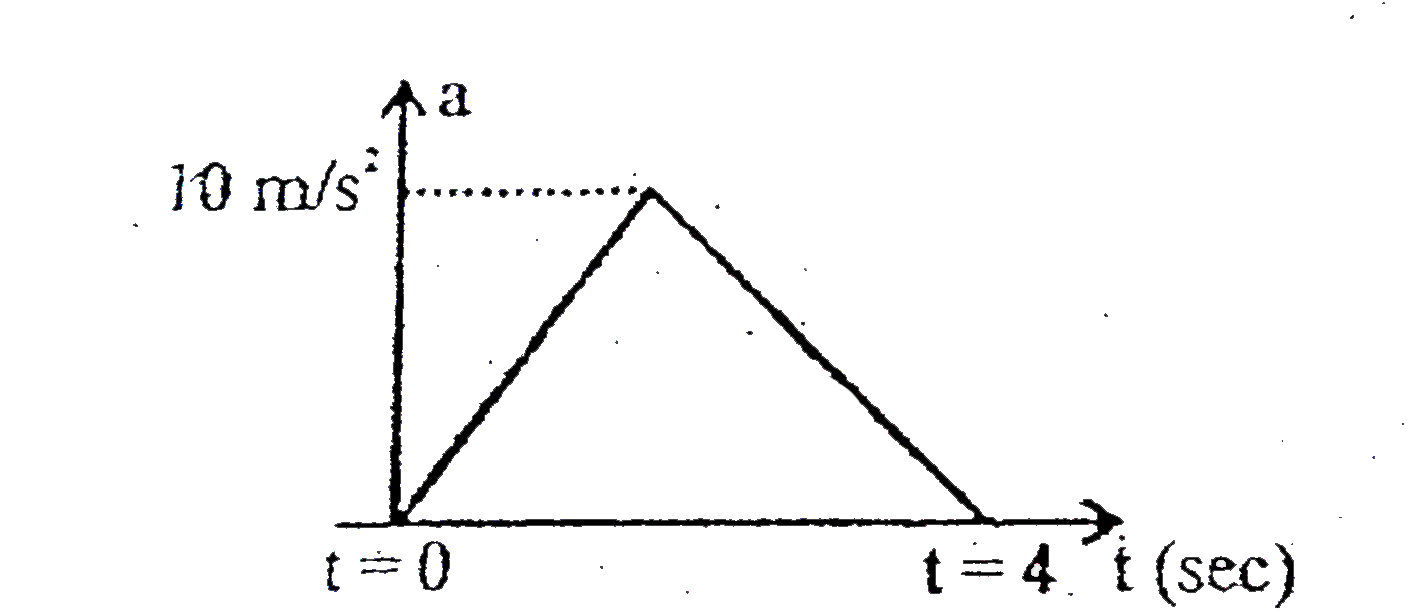A particle move with velocity v1 for time t1andv2 for time t2 along a straight line. The magntidue of its average acceleration is
v2−v1t1−t2
v2−v1t1+t2
v2−t1t2−t1
v1+v2t1−t2
The correct Answer is:B
To find the magnitude of the average acceleration of a particle that moves with different velocities over different time intervals, we can follow these steps:
1. Understand the Concept of Average Acceleration:
Average acceleration is defined as the total change in velocity divided by the total time taken. Mathematically, it can be expressed as:
aavg=ΔVΔt
where ΔV is the change in velocity and Δt is the total time.
2. Identify the Given Values:
- Initial velocity v1 during time t1.
- Final velocity v2 during time t2.
3. Calculate the Change in Velocity:
The change in velocity (ΔV) can be calculated as:
ΔV=v2−v1
4. Calculate the Total Time:
The total time (Δt) during which the particle is in motion is the sum of the two time intervals:
Δt=t1+t2
5. Substitute the Values into the Average Acceleration Formula:
Now substitute ΔV and Δt into the average acceleration formula:
aavg=v2−v1t1+t2
6. Determine the Magnitude of Average Acceleration:
Since acceleration is a vector quantity, we take the magnitude:
|aavg|=∣∣∣v2−v1t1+t2∣∣∣
Final Answer:
The magnitude of the average acceleration is:
|aavg|=∣∣∣v2−v1t1+t2∣∣∣
Average acceleration is defined as the total change in velocity divided by the total time taken. Mathematically, it can be expressed as:
aavg=ΔVΔt
where ΔV is the change in velocity and Δt is the total time.
- Initial velocity v1 during time t1.
- Final velocity v2 during time t2.
The change in velocity (ΔV) can be calculated as:
ΔV=v2−v1
The total time (Δt) during which the particle is in motion is the sum of the two time intervals:
Δt=t1+t2
Now substitute ΔV and Δt into the average acceleration formula:
aavg=v2−v1t1+t2
Since acceleration is a vector quantity, we take the magnitude:
|aavg|=∣∣∣v2−v1t1+t2∣∣∣
The magnitude of the average acceleration is:
|aavg|=∣∣∣v2−v1t1+t2∣∣∣
Topper's Solved these Questions
- MOTION IN A STRAIGHT LINEBook:AAKASH INSTITUTEChapter:MOTION IN A STRAIGHT LINEExercise:ASSIGNMENT (SECTION - B)
Explore 33 Videos
- MOTION IN A STRAIGHT LINEBook:AAKASH INSTITUTEChapter:MOTION IN A STRAIGHT LINEExercise:ASSIGNMENT (SECTION - C)
Explore 37 Videos
- MOTION IN A STRAIGHT LINEBook:AAKASH INSTITUTEChapter:MOTION IN A STRAIGHT LINEExercise:EXERCISE
Explore 30 Videos
- MOTION IN A PLANEBook:AAKASH INSTITUTEChapter:MOTION IN A PLANEExercise:Assignement section -J (Aakash Challengers Questions)
Explore 4 Videos
- MOTION IN STRAIGHT LINEBook:AAKASH INSTITUTEChapter:MOTION IN STRAIGHT LINEExercise:Assignment (SECTION - J)
Explore 2 Videos
Similar Questions
A particle moves with a velocity v(t)=(12)kt2 along a straight line . Find the average speed of the particle in a time t.
View SolutionA body travels along a straight line with uniform acceleration a1 for time t1 and with uniform acceleration a2 for time t2 for time t2. What is the average acceleration?
View Solution
Knowledge Check
Acceleration time graph of a particle moving along a straight line is given. Then average acceleration between t=0 & t=4 is :−
 A0m/s2B5m/s2C10m/s2D7.5m/s2
A0m/s2B5m/s2C10m/s2D7.5m/s2A particle moves from A to B with a uniform velocity v1 and from B to A with a velocity v2. If it moves along a straight line between A and B, then the average velocity of the particle is
Av1v22Bv1+v22C2v1v2v1+v2DzeroIf a particle is moving the velocity v(t)=cos πt, along a straight line such that at t=0, s=4, its position function is given by
A1πcosπt+2B−1πsinπt+4C1πsinπt+4Dnone of these
A particle move with a velocity v=αt3 along a straight line.The average velocity in time interval t=0 to t=T is
View SolutionA car moves with speed v1 upto t3 time and then with speed v2 upto next 2t3 time.Path is straight line.What is the average speed of car
View SolutionA particle is moving in a straight line. It covers half of the total distance with velocity v0 Remaining half distance is covered with a velocity v1 for half the time and with velocity v2 for another half of time. Find the average velocity of the particle.
View SolutionA particle move with a velocity v=αt3 along a straight line.The average velocity in time interval t=0 to t=T is (A) αT3 (B) αT32 (C) αT33 (D) αT34
View SolutionA particle moves with an intial velocity v0 and retardation αv, where v is its velocity at any time t.
View Solution

